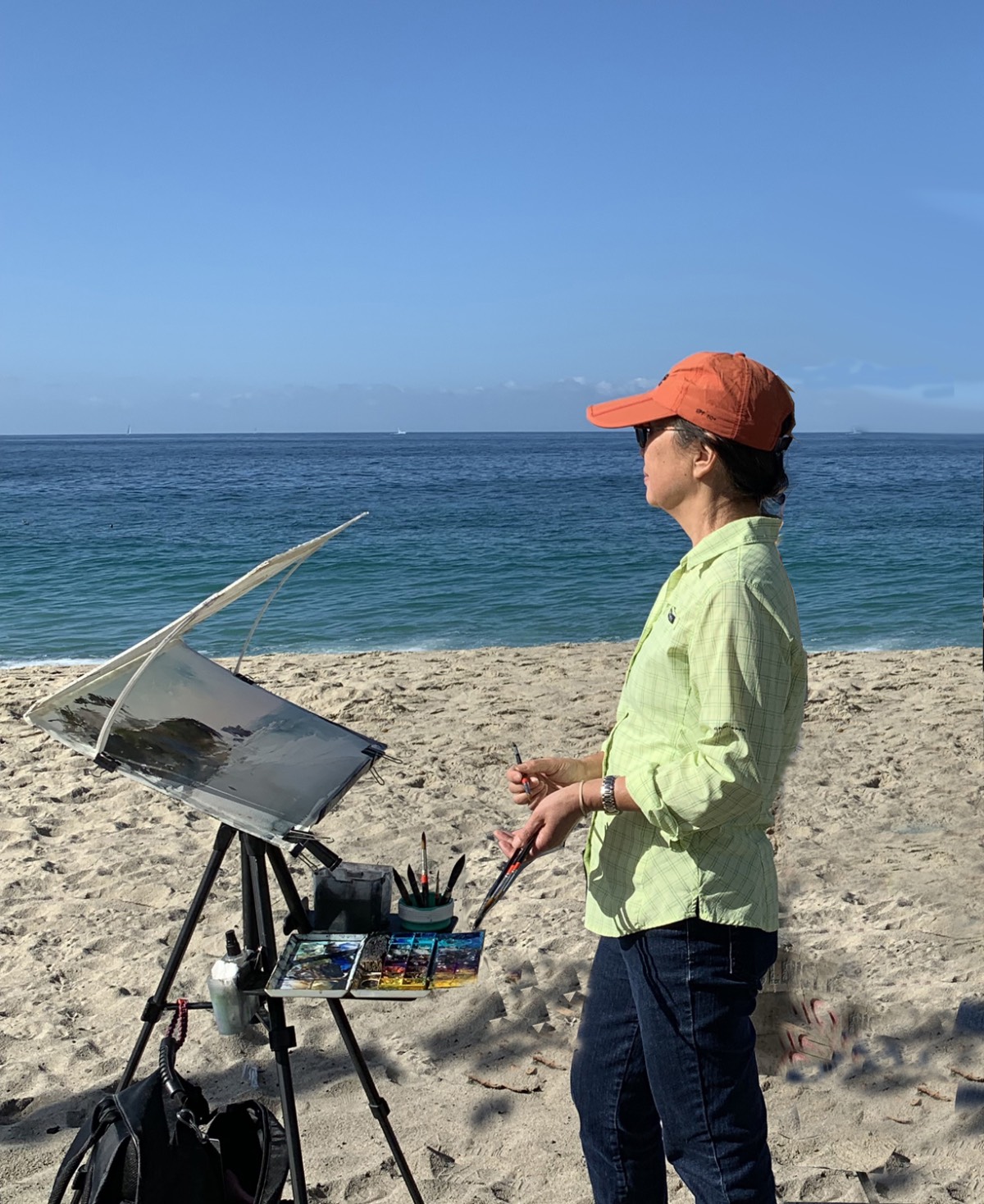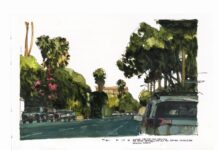By Shuang Li
As a first time plein air painter, just thinking about painting outdoors can be overwhelming. You might wonder, “What are the important things to consider when it comes to painting a plein air watercolor? What should I pack for a day of outdoor painting? How should I prepare myself before heading out?” My best advice: Keep it simple. Here, I’ll teach you how to prepare everything for your painting experience around easy mobility and high efficiency.

TOOLS FOR WATERCOLOR PLEIN AIR PAINTING
It is ideal to have a separate plein air painting set apart from your studio set. There is no need to pack your entire studio for plein air painting; keep a plein air painting toolkit that is packed and ready to go. Leave the rest of your painting materials behind in the studio. This will not only simplify the logistics of setting up en plein air and keep the tools and equipment you carry light; it will also help you remember necessary plein air tools and materials.

The plein air set you prepare should have everything you need for painting outdoors. Keeping your bag lightweight is a must, with a weight limit based on your capability. It will take some time and effort to simplify the logistics of the tools, but through trial and error, you will find a perfect balance between the absolute necessities and the “nice to have” items for your outdoor painting kit. My plein air tools and necessities are packed in one backpack. With a weight limit of 15 pounds (about 7 kg), I can easily walk for 1-2 miles with it on my back
See Shuang Li demonstrate her painting process in “Fearless Waterscapes with Shuang Li,” a video workshop that will help you become fluent in the unique language of painting water.
EASY UP, EASY DOWN
When painting outdoors, the changing light, weather conditions, and other factors may affect the plein air experience. Ideally, the setup and breakdown process is easy and fast, so you can spend more time painting instead of battling your tools. My plein air equipment shown here can be set up and ready for painting in about 5 minutes. To prepare for the Ready-Set-Go optimal condition, make sure you check your tools and equipment, and if some of the tools are new, practice the setup a few times in your backyard. Once back from an outing, always refill your water bottle and the pigment in your palette, sharpen your pencil, replace tissues, and more. These small steps at home will make your plein air experience more enjoyable.

As with any and all outdoor events, painting watercolor plein air always brings new surprises and unique challenges. Though my plein air equipment and tools work 90 percent of the time, there are always times that unexpected challenges require a new set of solutions or tools. However, keeping a good balance of simplicity and efficiency for the tools and equipment help focus on my main and only goal for the plein air session; creating a good watercolor painting outdoors.

This article is excerpted with permission from Shuang Li’s new book, “Watercolor Plein Air Basics: A Guide to Outdoor Watercolor Painting.” Meet Shuang Li, along with other watercolor greats including Alvaro Castagnet, Iain Stewart, Barbara Tapp, and Vladislav Yeliseyev in person at the 10th Annual Plein Air Convention & Expo in beautiful Denver, Colorado, May 21-25, 2023.







